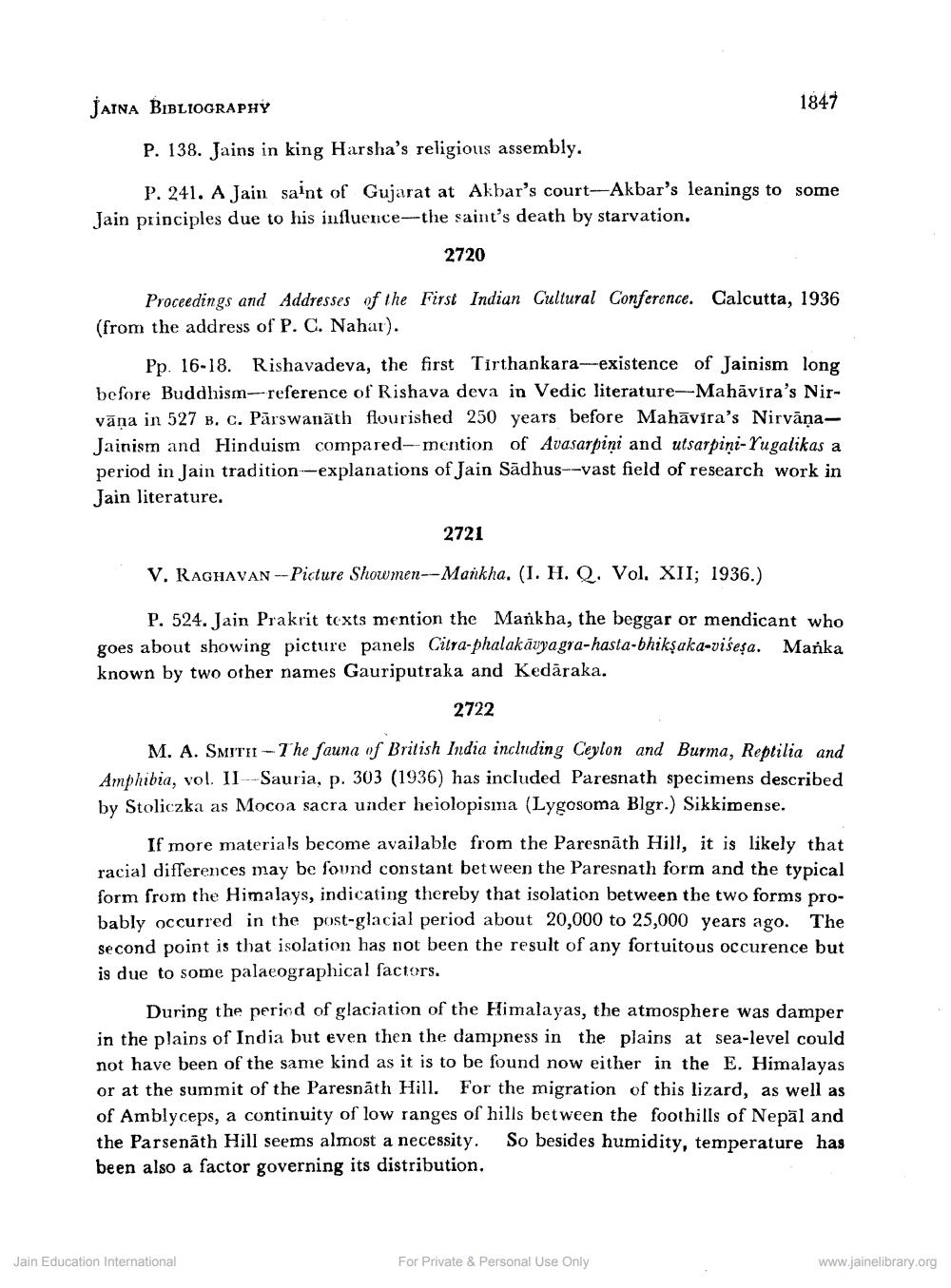________________
JAINA BIBLIOGRAPHY
1847
P. 138. Jains in king Harsha's religious assembly.
P. 241. A Jain saint of Gujarat at Akbar's court--Akbar's leanings to some Jain principles due to his influence--the saint's death by starvation.
2720
Proceedings and Addresses of the First Indian Cultural Conference. Calcutta, 1936 (from the address of P. C. Nahar).
Pp. 16-18. Rishavadeva, the first Tirthankara--existence of Jainism long before Buddhism-reference of Rishava deva in Vedic literature-Mahāvíra's Nirvāna in 527 B. c. Pārswanāth flourished 250 years before Mahāvira's NirvāņaJainism and Hinduism compared-mention of Avasarpiņi and utsarpiņi-Yugalikas a period in Jain tradition--explanations of Jain Sädhus--vast field of research work in Jain literature.
2721
V. RAGHAVAN -- Picture Showmen--Mankha. (I. H. Q. Vol. XII; 1936.)
P. 524. Jain Prakrit texts mention the Markha, the beggar or mendicant who goes about showing picture panels Citra-phalakāvyagra-hasta-bhikṣaka-višeşa. Manka known by two other names Gauriputraka and Kedāraka.
2722
M. A. Smirii --The fauna of British India including Ceylon and Burma, Reptilia and Amphibia, vol. II -Sauria, p. 303 (1936) has included Paresnath specimens described by Stoliczka as Mocoa sacra under heiolopisma (Lygosoma Blgr.) Sikkimense.
If more materials become available from the Paresnāth Hill, it is likely that racial differences may be found constant between the Paresnath form and the typical form from the Himalays, indicating thereby that isolation between the two forms probably occurred in the post-glacial period about 20,000 to 25,000 years ago. The second point is that isolation has not been the result of any fortuitous occurence but is due to some palaeographical factors.
During the period of glaciation of the Himalayas, the atmosphere was damper in the plains of India but even then the dampness in the plains at sea-level could not have been of the same kind as it is to be found now either in the E. Himalayas or at the summit of the Paresnāth Hill. For the migration of this lizard, as well as of Amblyceps, a continuity of low ranges of hills between the foothills of Nepal and the Parsenāth Hill seems almost a necessity. So besides humidity, temperature has been also a factor governing its distribution.
Jain Education International
For Private & Personal Use Only
www.jainelibrary.org




